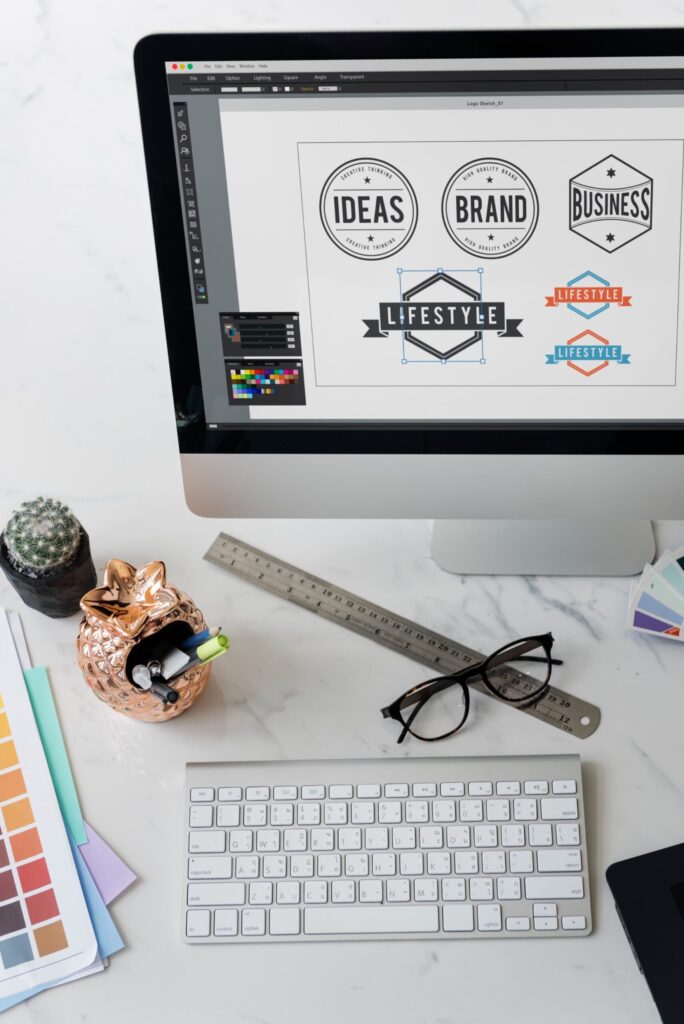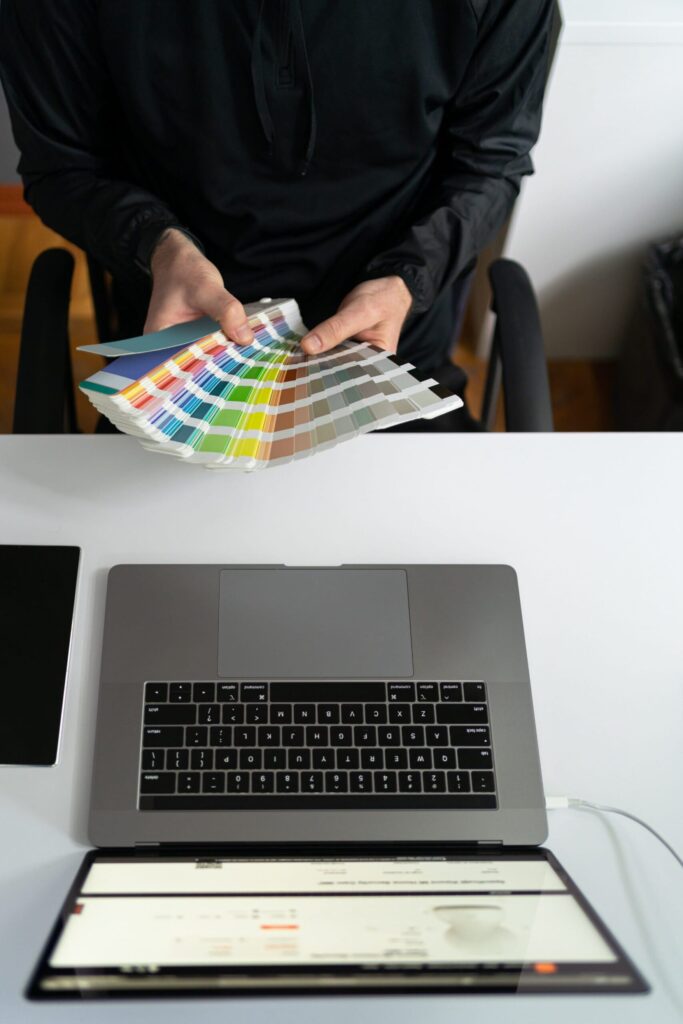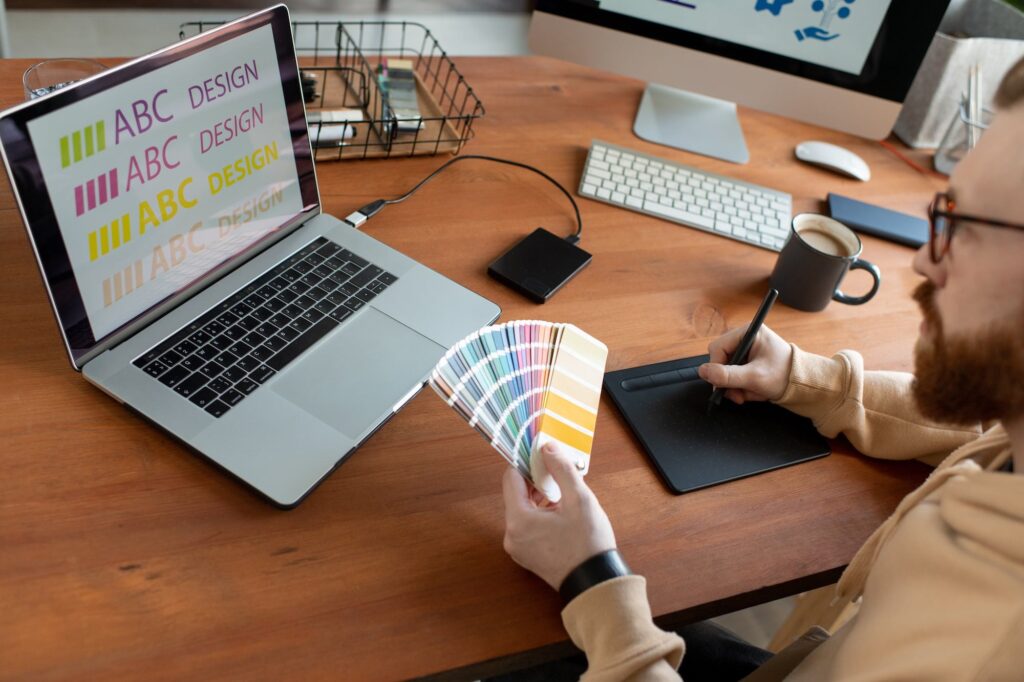A brand style guide (aka style guidelines, brand guidelines, brand manual, brand bible, or style manual) is a document that lays out your brand’s…
A brand style guide (aka style guidelines, brand guidelines, brand manual, brand bible, or style manual) is a document that lays out your brand’s personality, visual identity, voice, and tone. This document will include logos, alternative logos, brand fonts, color palette, writing guidelines, etc. Your brand style guide will also serve as a resource for designers, vendors, and others who are visually representing your brand.
The more detailed your branding guidelines are, the easier it is for your team and partners to produce marketing materials and products that portray a unified brand identity. That being said, your brand style guide doesn’t have to be 100 pages. Iconic brands like Harley Davidson, McDonald’s, and Starbucks have managed to create detailed style guides that are under 15 pages.
Other brands thought their brand guidelines required a few more trees to establish a strong brand identity. The LA Lakers style guide is 64 pages, Aldi’s is 144 pages, and Formula 1’s is 205 pages.
If you’re creating a style guide or looking to improve your style guide, we highly recommend the following resources:
When creating your brand style guide, you will also need to determine if it will be printed and distributed or used on the web. If it’s mainly a digital guide, you will need to design the guide for online user experience. If you’re planning to print and distribute hard copies of the guide you might exclude elements that would be challenging or costly to print.
For every section of this style guide, it’s important to not only tell people what to do but also what not to do and why. If there are common misuses of your brand elements, codify that they are wrong. You can do this by writing about them and including them as visual examples in the guide. Common mistakes could be an unapproved color combination, logo variation, or a design with an improper brand color percentage.

“A logo is a period at the end of a sentence, not the sentence itself.” – Sagi Haviv
Logos are one of the first things that come to mind when talking about branding. But identity elements are more than just a logo. Identity elements include primary logo, secondary logos, wordmarks, symbols, taglines, etc.
In addition to the visual brand assets, you should include how to download different versions and guidelines for their use. Specifically, you might want to include a list of things not to do and images of the mistakes.
Here are some things you might want to include:
This process is more challenging when you’re starting a brand from scratch. If you’re working with your brand that already has established visual elements, you and your design team have likely seen design work that doesn’t put your brand’s best foot forward. We recommend thinking about these subpar examples of design and working backward to build your list of dos and don’ts.

“Color is not only how people see us, but how we choose to be seen.” – Harley Davidson Style Guide
Your brand guide should list the colors (primary & secondary colors) that can be used to visually represent your brand.
Your primary color palette is the colors that appear in your logo and wordmark. These are the main colors that represent a brand. For example, the Lakers’ primary colors are purple and gold and Pepsi’s are red and blue.
In addition to these main brand colors, a style guide should include a functional color palette (accent & supporting colors). These colors will be used in type, the background of your marketing assets, etc. We recommend choosing 3-5 accent colors and 2-4 supporting colors.
After establishing your brand colors, we recommend noting the hierarchy of the different colors listed. This can be done using a pie chart or other visual means.
The color section of your style guide should include the following color codes: PMS (Pantone Color System), CMYK (Cyan, Magenta, Yellow, and Key Color Model), hex codes (Hexadecimal Color), RGB (Red, Green, Blue Color Model). Including each of these color code types will ensure that your brand colors can easily be accessed.

“Typography is basically word art.” – Dylan Todd, Designer
Resist the urge to just pick the first typeface you find because it matters more than you think. If you pick a lackluster font, you might blend in with other brands or end up the subject of an SNL sketch. Yes, here is a skit starring Ryan Gosling about Papyrus.
Picking a typeface(s) can be intimidating for non-designers. Designers throw terms around like sans serif, serif, font type, font family, font style, font, typeface, etc. And all you know is Times New Roman is what you used to write papers in high school and wingdings was your favorite font in elementary school.
So let’s break down a few of these terms:
Typeface – A set of letters, numerals, symbols that are designed to be unique. (Helvetica, Times New Roman, Open Sans, etc.)
Font Family – There are 5 different font families serif, sans serif, cursive, fantasy, and monospace.
Font Style – Font style refers to the different variations of a specific font/typeface. A font can be normal, bold, italic, bold italic.
Serif – A font family with a decorative stroke at the ends of the letter. For example, the aforementioned Times New Roman is a Serif font.
San Serif – A Font family without the decorative stroke, called a serif. For example, the body of this blog post is written in Open Sans, a San Serif font.
The typefaces you choose to represent your brand should help communicate your brand idea. Serif typefaces are associated with serious, traditional, and authoritative brands. Sans serif fonts are associated with trendy, forward-looking, tech-driven brands.
The font families and typefaces you choose should also be a utilitarian decision. They will affect not only the look of your content but also the user experience. If your typeface choice is difficult to read or format content with you have failed at this part of branding.
We suggest using 1-3 font families. 1-3 font families are all you need to represent your brand. McDonald’s uses a single font family to represent its brand all over the world. If you’re not design literate, lean heavily on your internal or external design team.
“How we talk is as important as what we talk about.” – Red Cross Style Guide
Your brand style guide isn’t only about visual elements. It also shapes the writing style and video creative choices of your brand’s content creators. Whether your brand is adventurous (Redbull) or calming (Casper), your content should reflect those feelings.
A common strategy for developing brand language is to establish pillars of your brand’s personality. These are 3-5 words or phrases that marketers want consumers to associate with their brand. For example, my alma mater, WCU, lists rooted, purposeful, and limitless in their style guide.
Defining your brand’s personality allows your team to create content with a consistent brand, voice whether it’s a social media post, blog post, or Super Bowl commercial.
Having a thorough brand guide helps you communicate with internal teams, external teams, and partners about your brand’s visual identity. Creating a brand style guide can be an extremely challenging project for non-designers. To a lot of us, a brand looks right or it doesn’t, and that’s all we can articulate. We simply don’t speak designer!
If you’re design illiterate, it’s important to work with your design team on this project. They will be able to easily articulate and document written design standards and image guidelines. That doesn’t mean you have to take a fully hands-off approach to the project. You have valuable insight into your target audience; you know the message you want to portray, and have seen examples of subpar branding in your previous marketing efforts.
Copyright © 2017-2024 · Carbon Digital · All Rights Reserved.